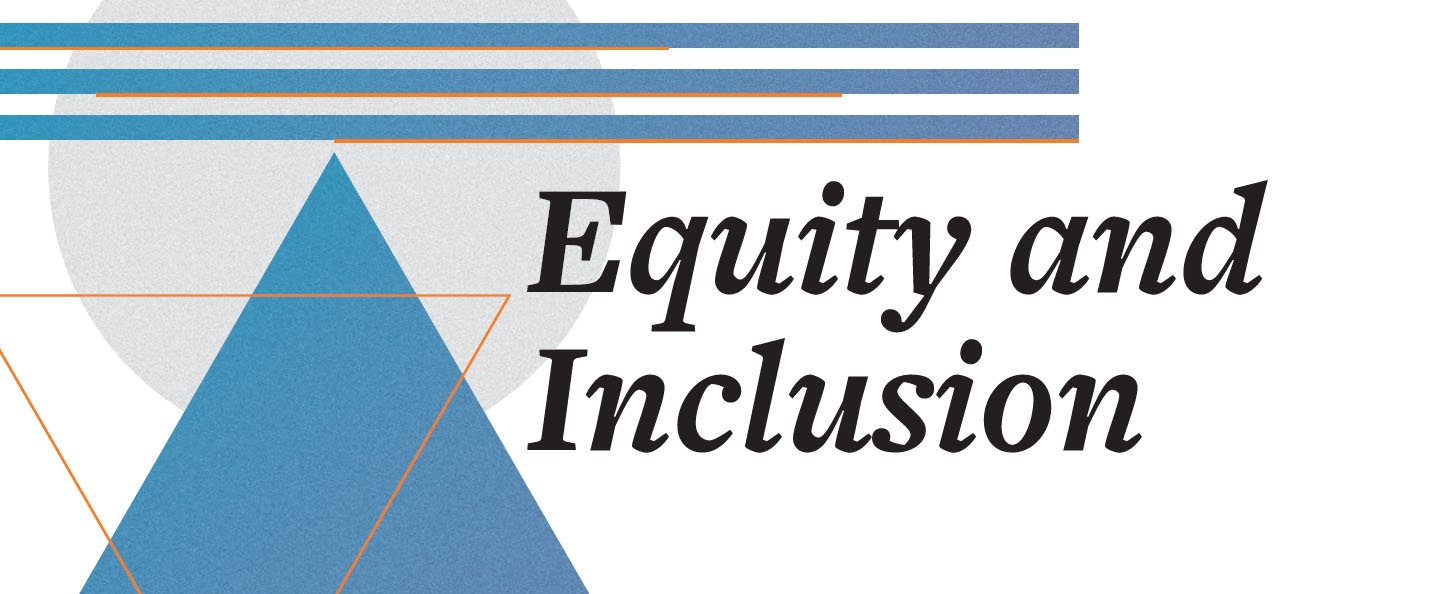
Equity and Inclusion
By Bess McKinney, Equity, Inclusion and Compassionate Leadership Coordinator, and Social Science Faculty
Merriam-Webster defines these words as follows:
Compassion(noun): Sympathetic consciousness of others’ distress, together with a desire to alleviate it.
Inclusion (noun): The act of including: the state of being included.
Equity (noun): Justice according to natural law or right specifically: freedom from bias or favoritism.
ON OCTOBER 16, ALL ELEVENTH- AND twelfth-grade students entered the TALI Theatre, and, after forty-five minutes, walked out with a greater understanding of those around them. In the first five minutes, the students were asked to reflect and to talk to each other about what had changed at Eastside Prep, what was changing in their lives and in the world around them, and how those changes made them feel. Then they were handed a sheet that included the anonymous answers of two of their classmates from a survey distributed and filled out earlier in the week. That survey asked students to identify their race, faith, ethnicity, gender, sexuality, first language, learning differences, socioeconomic status, and comfort at home, among other questions. In the Theatre that day, each student received one survey representing the answers of two of their classmates. Each survey question was read, and then each answer to the question was called out. When the answers on their paper were read, students stood, physically representing facets of their classmates’ identities. They looked around, saw how many of their classmates were standing with them, and then sat back down and listened as the next question was read aloud.
In the quiet of the Theatre that morning, students had a moment to imagine what it might feel like to be the only person in the room with a particular identity. They could look around them and see how many people might have felt alone at EPS at some point. At the end of our time together, when we were reflecting as a group, one student stood up and spoke. “It felt scary to stand up by myself, and I wasn’t even representing myself in that moment.”
In many ways, this student exercise was a continuation of the work being done by EPS faculty and staff. Two months before the eleventh and twelfth graders gathered in the Theatre, EPS faculty and staff met with, listened to, and learned from Aidan Key, director of the organization Gender Diversity, as he talked to us about gender identity. Faculty and staff practiced adapting to new gender pronouns that students might use, navigating the topic of gender identity with students as well as with each other. We worked to promote greater inclusion and equity within the EPS community.
In November, five students and two faculty members participated in the National Association of Independent Schools (NAIS) Student Diversity Leadership Conference (SDLC). This was the first time EPS had sent students to this major NAIS conference, and our decision to do so represents our commitment to equity and to the way the students’ experiences there will help support community at EPS. As one student said about their experience at the conference: “Being given the chance to go to SDLC in Nashville was…life changing. I traveled back on the plane a different person…I wasn’t alone or ashamed.”

Ms. McKinney in class at EPS.
The reason EPS has established a specific role and program to engage with equity, inclusion, and compassionate leadership is precisely because these words, as difficult as they are to define (see definitions to the left), are even harder to put into practice. And yet we must. Learning and working in the twenty-first century requires all students to know how to build and work within a diverse community, and creating such a community here at EPS—one in which everyone’s belonging is central—is a critical step to supporting everyone’s learning.
EPS has always been a community focused on the meaning of these words, but in this—the first year in which we’ve had a dedicated staff member focus on equity, inclusion, and compassionate leadership—our school has begun to put these words into practice. The purpose of this official program is to craft a curriculum and bring attention to that which we were already doing, as well as to broaden and engage with that which we have not yet addressed. In class meetings, assemblies, advisories, discussion groups, and retreats, students have engaged in conversations that have asked them to think about when someone feels a lack of belonging at EPS; to tap into their compassion for their classmates to move toward inclusion and a greater understanding of equity. Faculty and staff have thought about how one’s gender identity, one’s race, and one’s learning profile can create barriers to that belonging; and what we, as adults in the community, can do to better remove those obstacles.
We are all building. Students are building their capacity for compassion. Adults are building their understanding and skill in the creation of inclusive classrooms for all. The entire EPS community is embracing opportunities to learn, grow, thrive, and lead in the cultivation of a culture where we challenge our community to act out our vision every day—creating a better, more compassionate, more inclusive, more equitable world here in Kirkland, Washington.
Equity, Inclusion, and Compassionate Leadership at EPS: Fall/Winter 2018–2019
These snapshots illustrate EPS’s efforts to promote equity, inclusion, and compassion this fall.
- Grade-level class meetings to discuss identity and compassion: 8th, 9th, 10th, 11th, 12th.
- Upper School and Middle School Assemblies on gender identity and to celebrate Dr. Martin Luther King, Jr.
- Middle and Upper School Advisory debriefs on gender identity and Dr. Martin Luther King, Jr. Assembly.
- Faculty Professional Development with Aidan Key on gender diversity.
- Parent information night with Aidan Key on gender diversity.
- Student attendance at NAIS Student Diversity Leadership Conference.
- Student attendance at Middle School Diversity Summit.
- Faculty attendance at People of Color Conference.
- Support of student groups: Upper School Student Equity and Inclusion Club, Upper School Pride Alliance, Middle School Pride Club.
- Support and facilitation of faculty/staff Equity, Inclusion, and Compassionate Leadership Co-Learning Group.

